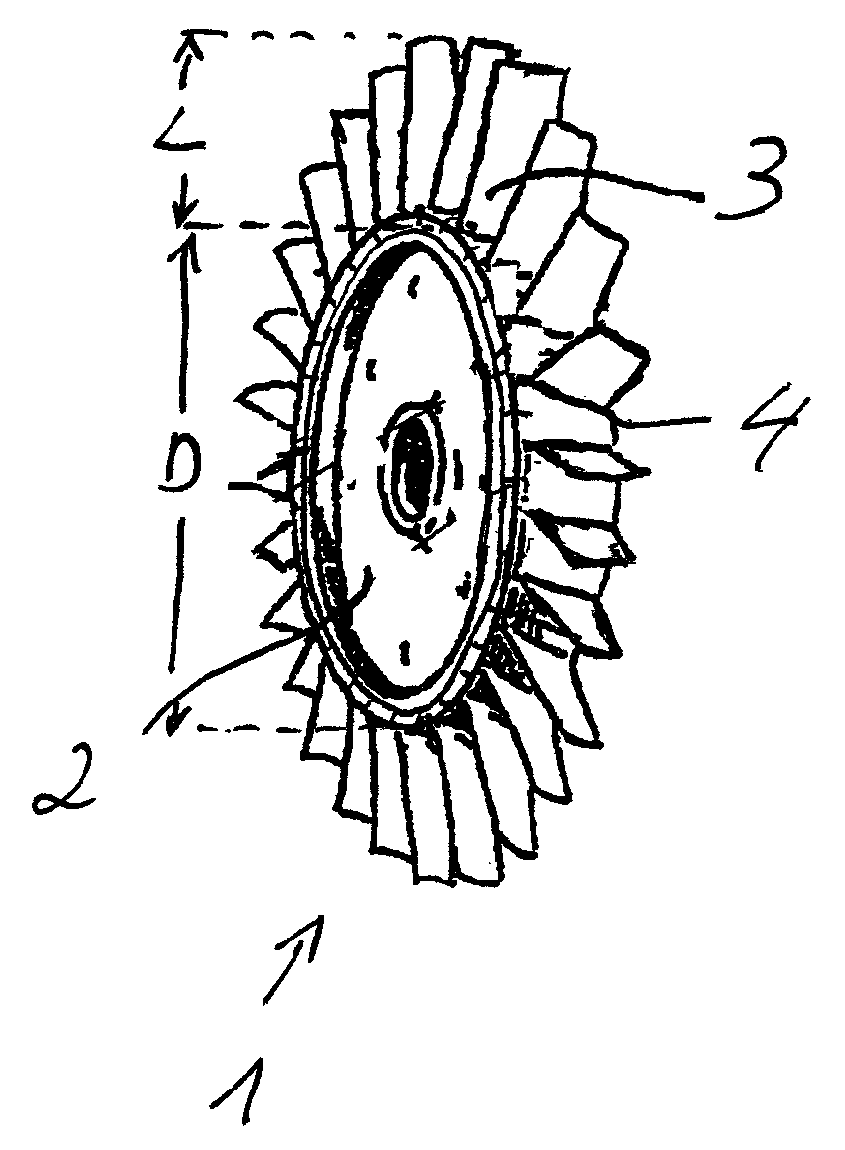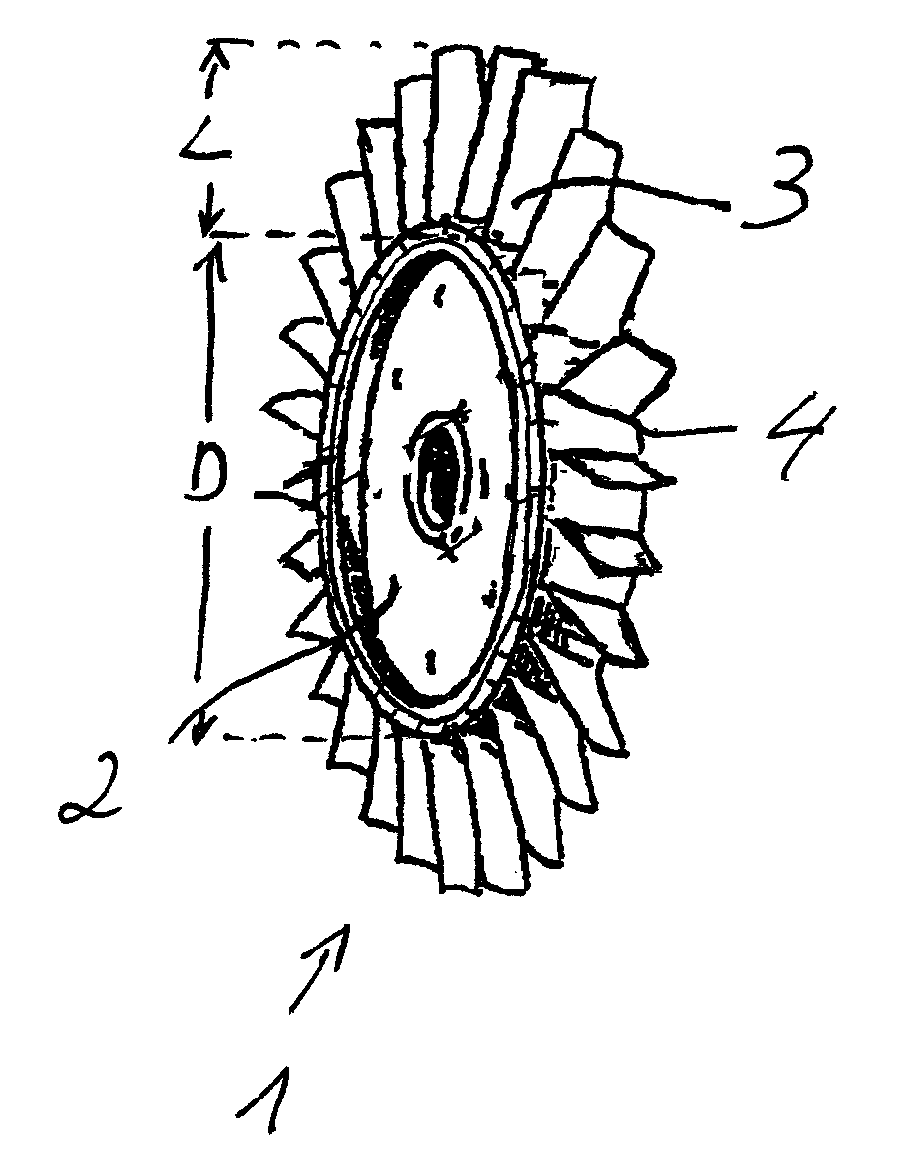Dual blisks in the high-pressure compressor
a compressor and high-pressure technology, applied in the direction of arc welding apparatus, resistance welding apparatus, welding electric supply, etc., can solve the problems of material and microstructure modification unfavorable, material and microstructure modification, and inability to meet the requirements of certain joining methods
- Summary
- Abstract
- Description
- Claims
- Application Information
AI Technical Summary
Benefits of technology
Problems solved by technology
Method used
Image
Examples
Embodiment Construction
[0021]The FIGURE shows a perspective representation of a so-called blisk (bladed disk) as it is used as a rotor in a gas turbine and, in particular, in a high-pressure compressor of a gas turbine. The characterizing feature of blisk 1 is the integral design of rotor blades 3 on disk 2. The advantage of a blisk is that the joining elements between blades and disk, such as blade feet and disk channels, can be dispensed with, so that smaller edge loads result for the disk as well as a corresponding savings in weight. Of course, the selection of materials and establishing the structure of the materials in the respective components is limited by the integral design of blades and disk 2, 3. With the present invention, however, this problem can be solved, so that even in rotors or impellers in high-pressure compressors, in which there is great limitation due to the limited structural space based on the plurality of blades 3 and the small dimension of blades 3, different materials and / or ma...
PUM
| Property | Measurement | Unit |
|---|---|---|
| distance | aaaaa | aaaaa |
| frequencies | aaaaa | aaaaa |
| pressure | aaaaa | aaaaa |
Abstract
Description
Claims
Application Information
 Login to View More
Login to View More - R&D
- Intellectual Property
- Life Sciences
- Materials
- Tech Scout
- Unparalleled Data Quality
- Higher Quality Content
- 60% Fewer Hallucinations
Browse by: Latest US Patents, China's latest patents, Technical Efficacy Thesaurus, Application Domain, Technology Topic, Popular Technical Reports.
© 2025 PatSnap. All rights reserved.Legal|Privacy policy|Modern Slavery Act Transparency Statement|Sitemap|About US| Contact US: help@patsnap.com


